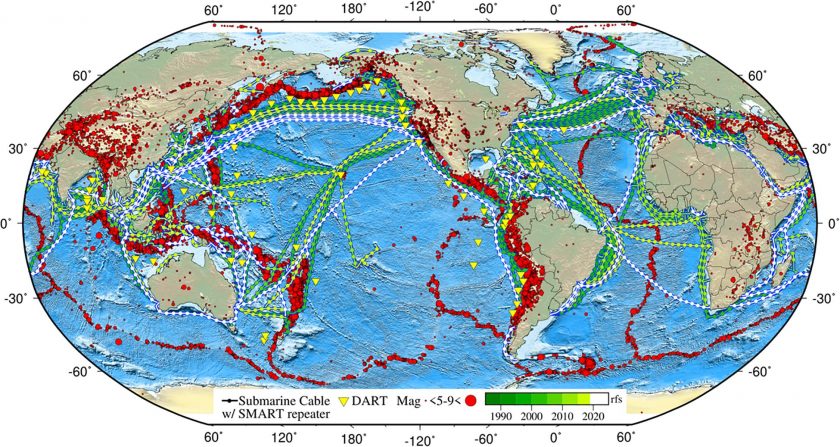Underwater Cables Get Retrofit for Geosciences Research
December 5, 2022

A million kilometers of fiber-optic cable lie on the ocean floor, carrying telecommunication signals across vast stretches of ocean to keep the whole world connected. A new international collaboration, including scientists from the Jackson School of Geosciences, aims to turn them into a global early warning system for tsunamis and earthquakes, as well as a sensor array for monitoring unexplained temperature changes.
Researchers from the University of Texas Institute for Geophysics are developing sensors that can “piggyback” on the infrastructure of the existing telecommunications network. The sensors will allow for low-cost global deep ocean observation to detect temperature, pressure and seismic acceleration — the rate of change in the Earth’s natural vibrations. Data provided could inform scientists of oncoming underwater earthquakes, volcanic eruptions and tsunamis, as well as keep track of any long-term changes in the state of the ocean.
“Our focus here is on bottom pressure, temperature and acoustic data, and their value for ocean climate monitoring,” said Jackson School Professor Patrick Heimbach, who is part of the team that will be conducting a series of numerical simulations that will determine data quality available from the modified cables — called Science Monitoring and Reliable Telecommunications (SMART) cables.
Heimbach is also a researcher at The University of Texas at Austin’s Oden Institute for Computational Engineering and Sciences.
The effort will support the United Nations’ SMART Cables Joint Task Force working to bring the SMART cables concept to fruition by uniting experts from around the world and across disciplines.
Back to the Newsletter